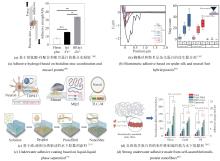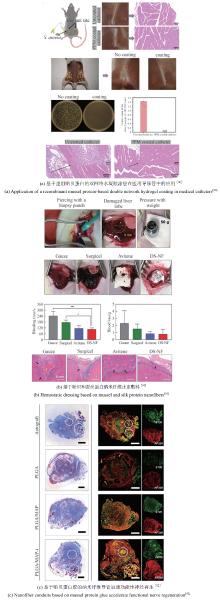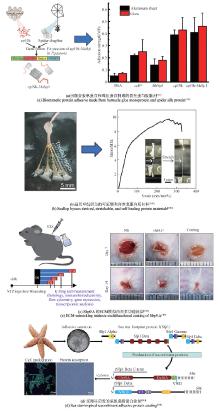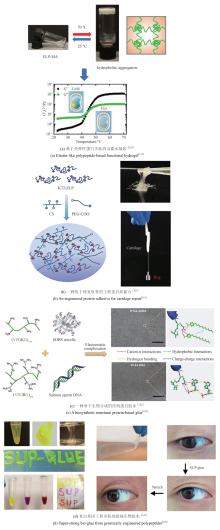|
||
|
Synthetic biology and applications of high-adhesion protein materials
Synthetic Biology Journal
2025, 6 (4):
806-828.
DOI: 10.12211/2096-8280.2025-043
Due to their exceptional bioadhesive properties and potential biocompatibility, high-viscosity protein materials exhibit significant application prospects in the fields of biomedical materials and adhesives. However, traditionally sourced high-viscosity protein materials encounter numerous challenges, including low yields, structural complexity, and difficulties in scaling up production. Synthetic biology, as an emerging interdisciplinary field, offers innovative strategies to address these bottlenecks. This review systematically summarizes recent advances in the biosynthesis, modification, and applications of high-viscosity protein materials, focusing on the advantages of synthetic biology in addressing issues related to the yield, controllability, and functional diversity of these materials. The precise design and efficient expression of adhesive proteins, such as mussel adhesive proteins, barnacle cement proteins, and scallop foot proteins, achieved through genetic engineering, are comprehensively reviewed, demonstrating the overcoming of limitations in the production and controllability of high-viscosity protein materials. Furthermore, the unique advantages of these protein materials in bioadhesives and functional medical coatings, such as the wet adhesion of mussel proteins, the strong adhesion of barnacle cement proteins, and the tunable properties of elastin-like proteins, are summarized. By employing synthetic biology approaches, limitations in the yield, performance, and functionality of high-viscosity protein materials can be overcome, thereby accelerating their application in areas such as tissue engineering and surface modification. Finally, the latest advancements and innovations in the field of synthetic biology for high-viscosity protein materials are summarized, and future development directions are envisioned, offering new ideas and strategies for the development of high-performance, multifunctional high-viscosity protein materials.
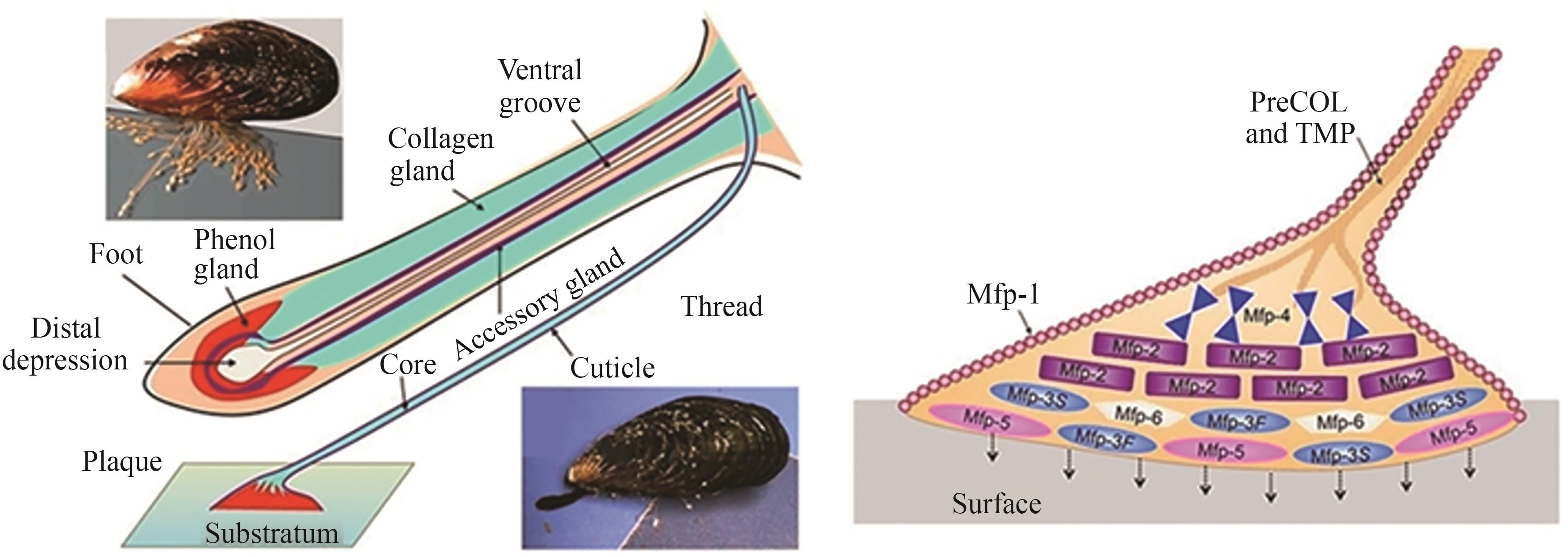
Fig. 1
Structure and adhesion mechanism of Mfps[
Extracts from the Article
贻贝,作为海洋环境中常见的生物,其强大的水下黏附能力一直备受科学界关注[70]。这种卓越的黏附性能主要归功于其分泌的足丝蛋白,即贻贝足丝蛋白。目前,已鉴定出约25~30种Mfp[10],在足丝黏附斑块中发现6种(图1),其余分布在细丝的其他部分[71]。Mfp-1被认为是主要的基底结合蛋白;Mfp-2则参与蛋白网络构建和柔韧性调节[72];Mfp-3富含DOPA,具有最丰富的多态性[73];Mfp-4存在于斑块-椎弓根丝连接处,有助于胶原蛋白的递送[74];Mfp-5的DOPA含量最高,富含甘氨酸和赖氨酸,在界面黏附中起决定性作用[75];Mfp-6是一种富含巯基的界面贻贝黏附蛋白,已被报道为贻贝的蛋白质抗氧化剂,有助于DOPA保持表面黏附能力[76]。不同Mfp的氨基酸序列和结构域组成差异,导致其黏附特性和力学性能各异,从而实现对不同基底和环境的适应性。
Other Images/Table from this Article
|

